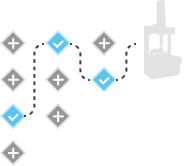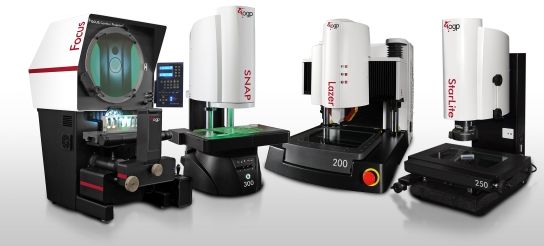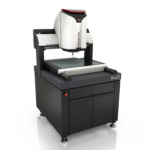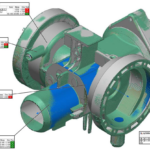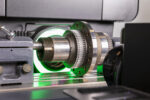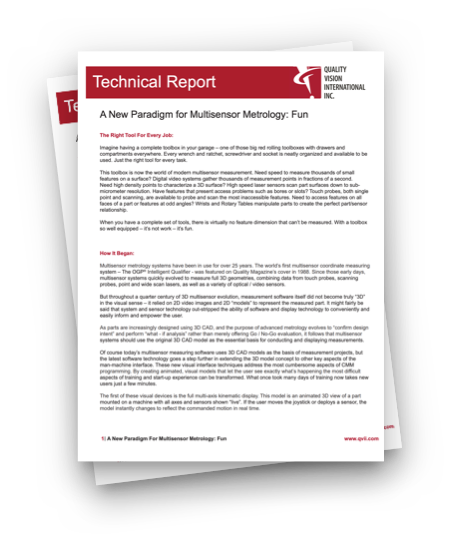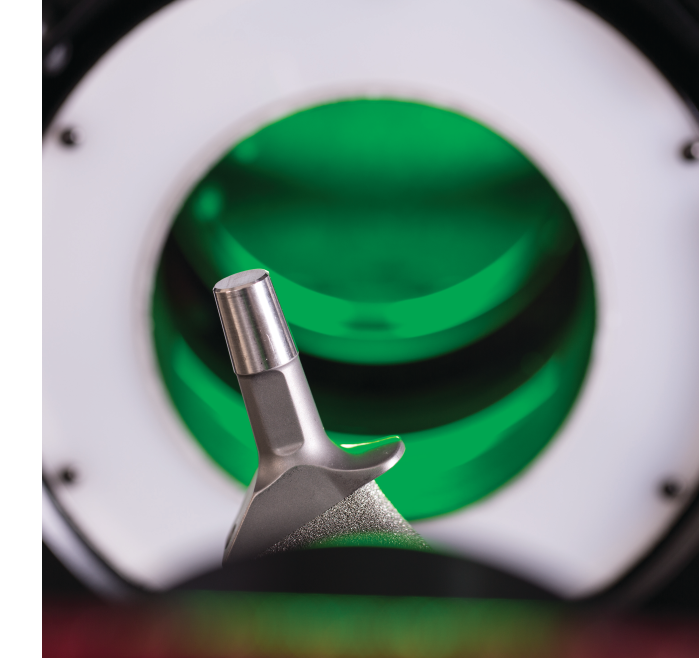 The use of video measurement systems in dimensional metrology requires optical components designed with telecentricity, a specialized lens property that produces the most accurate and reliable images in “machine vision” applications.
The use of video measurement systems in dimensional metrology requires optical components designed with telecentricity, a specialized lens property that produces the most accurate and reliable images in “machine vision” applications.
Telecentric lens assemblies have been used for years. But as with all optical designs, perfecting their use for metrology requires expert knowledge in optics, specialized lens components, finely-tuned illumination, and complex software algorithms that compensate for distortion in the imaging process.
Since its founding in 1945, Optical Gaging Products (OGP) has pursued the perfection of fully telecentric optical designs because they are necessary for obtaining the best accuracy in high-throughput video measurement systems. Today, OGP telecentric optics assemblies are used worldwide in most OGP video and multisensor measurement machines.
What is Telecentricity?
Telecentricity is a special property in optical assemblies in which the chief rays are made parallel to the optical axis. The optics are designed specifically to eliminate perspective angles and keep the size of the object image constant throughout the depth of field (DOF), regardless of the distance between the lens and the object.
Conversely, entocentric camera optics, the most commonly used lenses, use non-parallel chief rays and angular fields of view (AFOV) to mimic depth perception in a similar way to our eyes. Objects within the field of view change in size as focus varies.
Think of telecentricity in this way – if you were to drive up to another car at a stop light, the car would appear larger as you approached, enabling you to perceive the stopping distance needed before a crash. However, if you were looking at the car through telecentric optics, it would NOT appear to become larger as you got closer. Instead, the car would appear exactly the same whether you were one hundred feet away or ten.
How Do Telecentric Lenses Work?
This diagram illustrates the differences between telecentric and entocentric lenses in a metrology application. Imaged at a low magnification, where the depth of field is the greatest, a part with nine identical equally spaced square posts imaged in a single field of view by each lens type could appear as shown.
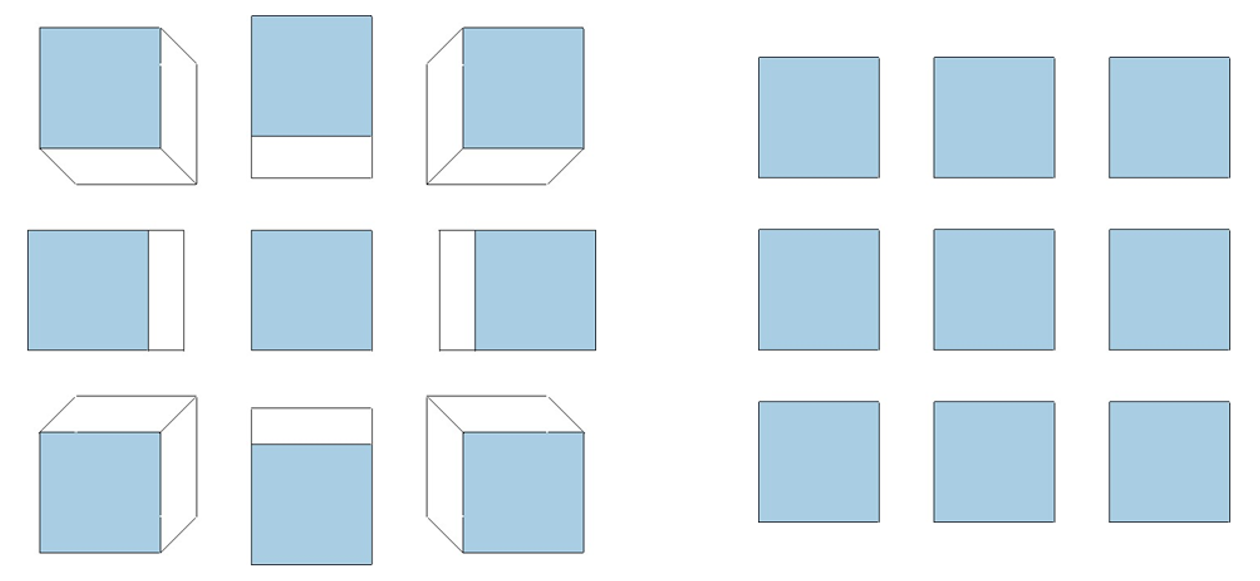
Image with entocentric lens (left); same image with telecentric lens (right)
The entocentric lens (left image) shows the sides of the outer posts and different spacing between the posts (note the varying distances between the blue corners). This introduces several undesirable characteristics for measurement. Changing the depth of field would worsen or improve those undesirable characteristics depending on the position of the lens. Blurred edges, wall effect, and other types of distortion would alter the crisp clean imagery needed for obtaining the most accurate measurements.
Conversely, the telecentric lens (right) shows only the tops of all nine posts with identical sizes and spacing. And because telecentric optics keep the size of the object’s image constant throughout the depth of field, changing the camera position would have no effect on measurement.
How Does Telecentricity Work Under Zoom Magnification?
Telecentricity is important at all levels of magnification, but for practical purposes, it is most important at lower magnifications where the depth of field is the largest. The more the focus can vary from best focus, the greater the chance of error. When the depth of field is large, the image may appear well-focused even when it really isn’t, so there is a greater chance of error when a system is not telecentric at low magnifications.
A telecentric lens yields a different advantage at higher magnifications with shallow depths of field. In entocentric lens designs, two optical phenomena occur when light entering the lens system is not parallel — “wall-effect” and “wrap-around effect.” On prismatic parts such as cylinders and spheres, the light tends to effectively “wrap around” the curved surfaces, while light reflects from edges of surfaces perpendicular to the object plane – “walls.” This causes image contrast to degrade, or in the case of wall-effect, for a light shadow to appear on the image of the edge.
These effects have often been hurdles for video measurement systems. However, a telecentric lens system minimizes these effects, improving image quality, and therefore measurement accuracy and repeatability.
What is Full Telecentricity Versus Partial?
One may expect that optics assemblies rated as telecentric would be fully telecentric a.) throughout the entire magnification range and b.) in the entire field of view. However, this is not the case.
Optics can be partially telecentric if the system is rated for telecentricity in only one magnification setting, rather than throughout the entire magnification range. While single magnification telecentricity is usually common practice among systems manufacturers, OGP engineers invented the TeleStar® 10:1 zoom lens for SmartScope Quest and Vantage models in 2002*. This was the first motorized mechanical zoom optics configuration designed strictly for optical metrology, and is still unique in the industry to this day. Telecentric over the full zoom range, TeleStar was a huge advancement in producing images of the highest accuracy. Several of its optical and mechanical innovations earned patents.
In addition to partial telecentricity in the magnification range, many video measurement systems on the market today limit telecentricity to an area inside the field of view as specified by the manufacturer. Imagery outside of the specified area may have distortion unsuitable for measurement.
For example, the images below show a hole feature on a part imaged with partially telecentric optics. The image on the left shows telecentricity because the hole is in the center of the field of view, within the manufacturer’s specified area for telecentricity. However, the image on the right shows the same hole outside the manufacturer’s specified area, on the outer edge of the field of view. Because telecentricity is limited to the center of the view, the image of the hole on the outer edge of the field shows a wall inside the hole that would be problematic for metrology use.
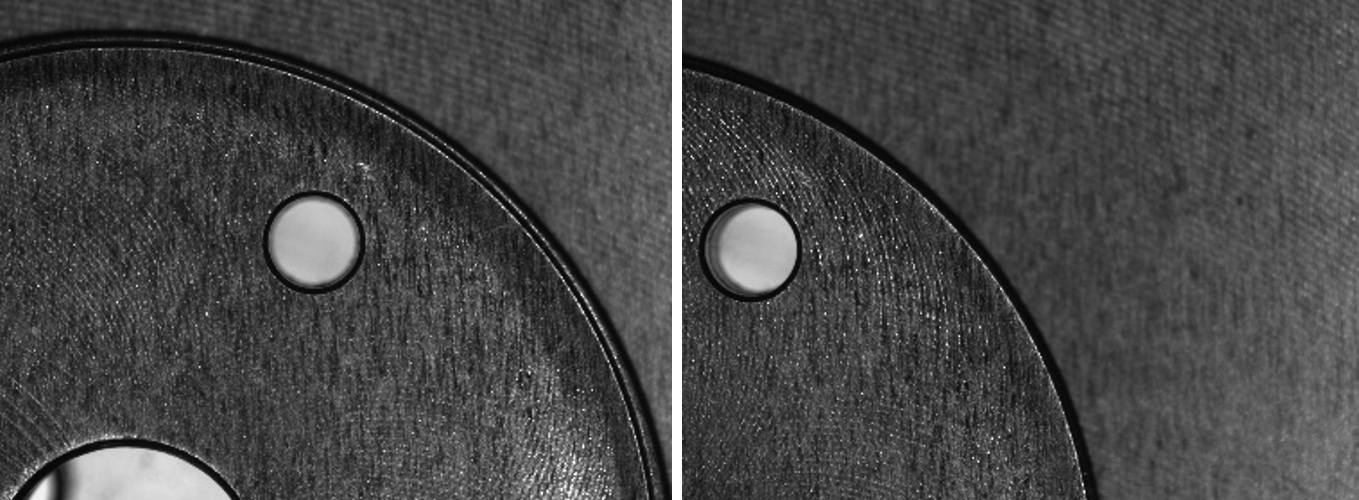
Conversely, fully telecentric optical designs offer distortion-free accuracy throughout the ENTIRE field. In the images above, if the optics were fully telecentric, the hole would appear exactly the same in both images even at the outer edge of the field.
OGP has pursued the perfection of fully telecentric optical designs because they are necessary for obtaining the best accuracy in high-throughput video measurement systems.
OGP’s History in Telecentric Lens Development
Optical advantages aside, the practical implications of using fully telecentric designs are convenience, speed, and ultimately, higher measurement throughput. Because fully telecentric designs measure accurately throughout the entire field of view, and the entire magnification range, users can easily place parts anywhere on the stage and snap images within seconds. Video measurement is already fast by nature of how it operates, and when used as a primary sensor, can greatly reduce measurement run times.
OGP’s quest to perfect fully telecentric optical designs started in 1945 when the newly founded company partnered with Eastman Kodak to produce and sell contour projectors. Kodak’s early projectors had a telecentric coaxial surface illumination constant working distance from the part to the receiving lens. This optical design characteristic proved to be very important to OGP as it developed modern comparators and video-based measurement systems.
In committing to full telecentricity as a best practice, OGP optics engineers spent decades developing and experimenting with fully telecentric lens designs, illumination, and software that could process the most accurate images. The intellectual property gained positioned OGP as a differentiator in the video measurement marketplace.
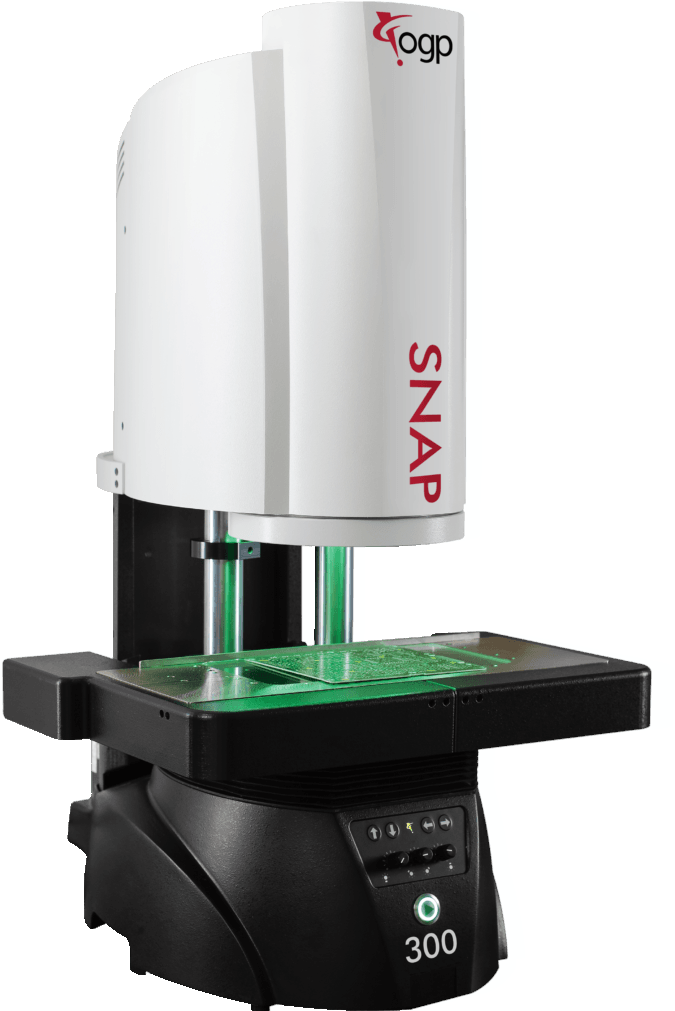 In addition to the development of the TeleStar 10:1 zoom lens mentioned above, OGP debuted SNAP Large FOV Video Measurement Systems in 2011 strictly for instant 2D video measurement with full telecentricity in a large field of view. Also featuring a large depth of field, SNAP systems are designed to measure small, intricate parts right on the manufacturing floor.
In addition to the development of the TeleStar 10:1 zoom lens mentioned above, OGP debuted SNAP Large FOV Video Measurement Systems in 2011 strictly for instant 2D video measurement with full telecentricity in a large field of view. Also featuring a large depth of field, SNAP systems are designed to measure small, intricate parts right on the manufacturing floor.
In the same year, OGP launched c-vision Video Contour Projectors combining the same fully telecentric video optics found in SNAP systems with the rugged form factor and high load capacity of traditional optical comparators. Users moving to video measurement quickly realize the benefits of speed, higher accuracy, and automated software measurement.
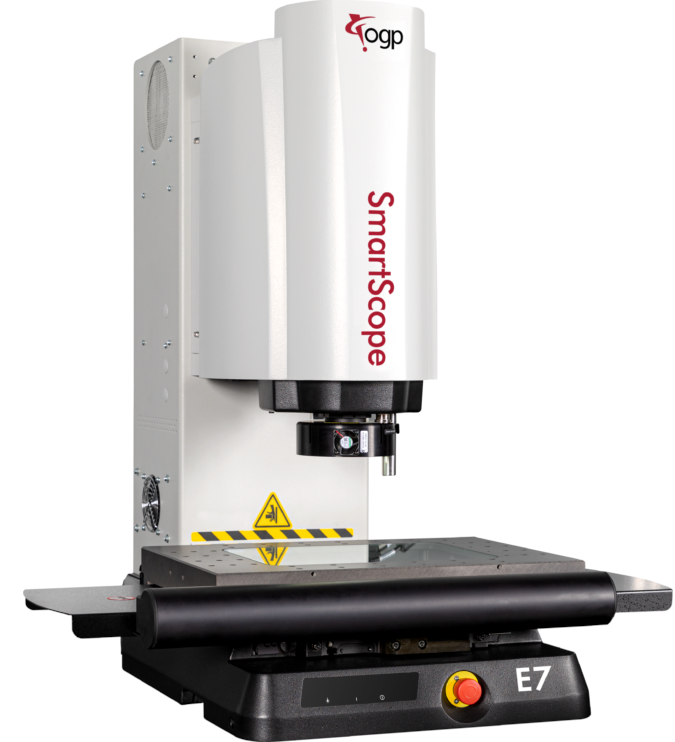 Fusion Large Field of View 3D Multisensor Systems followed in 2014, offering users fully telecentric video optics in a large field of view combined with laser and probe capabilities. TurnCheck Shaft Measuring Systems, invented in 2017, also benefit from fully telecentric receiving optics in a large field of view.
Fusion Large Field of View 3D Multisensor Systems followed in 2014, offering users fully telecentric video optics in a large field of view combined with laser and probe capabilities. TurnCheck Shaft Measuring Systems, invented in 2017, also benefit from fully telecentric receiving optics in a large field of view.
In 2022, OGP engineers created the all-new IntelliCentric optical system combining a fully telecentric design with fixed lenses and automatic digital zoom. IntelliCentric optics have very low distortion, instantaneous magnification changes, and excellent low mag performance. They are found in SmartScope E-Series systems, the first in the next generation of SmartScope multisensor metrology systems.
Closing Thoughts
In summary, optical assemblies developed specifically for telecentricity produce the most accurate and reliable images in “machine vision” applications because they eliminate image distortion associated with angular fields of view used in entocentric designs. Fully telecentric optics are preferred over partially telecentric optics because they provide accurate imagery in all magnification levels within the depth of field, and in all areas of the field of view, as opposed to a limited center area specified by the manufacturer.
Fully telecentric optics are a foundational design element in OGP video measurement and multisensor systems. We believe telecentric optical designs are the key to even faster and easier-to-use metrology systems in the future.
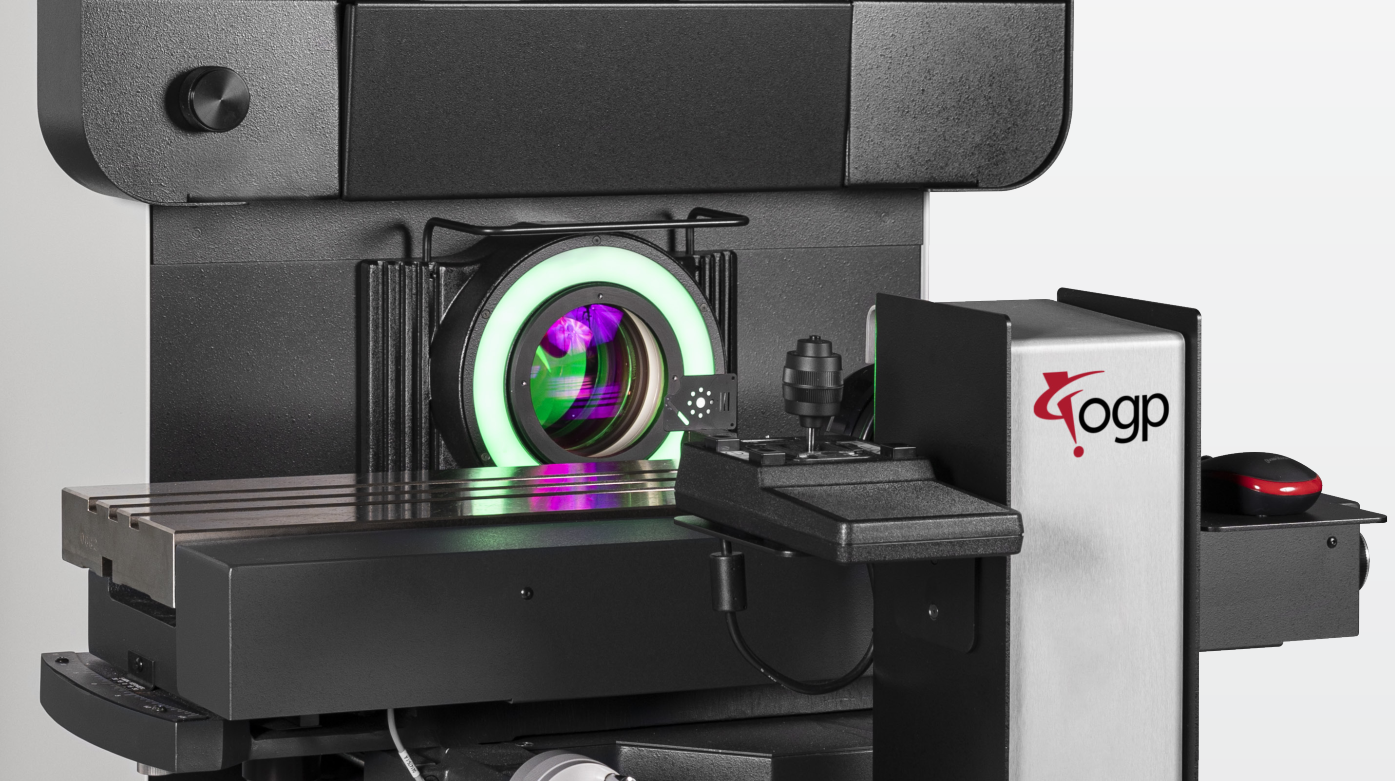
*Quest branded systems are sold in North America while Vantage systems are found outside North America.
Contour Projectors, c-vision, IntelliCentric, OGP, Quest, SmartScope, SNAP, Telestar, Vantage, TurnCheck are registered trademarks or copyrights of Quality Vision International Inc.


